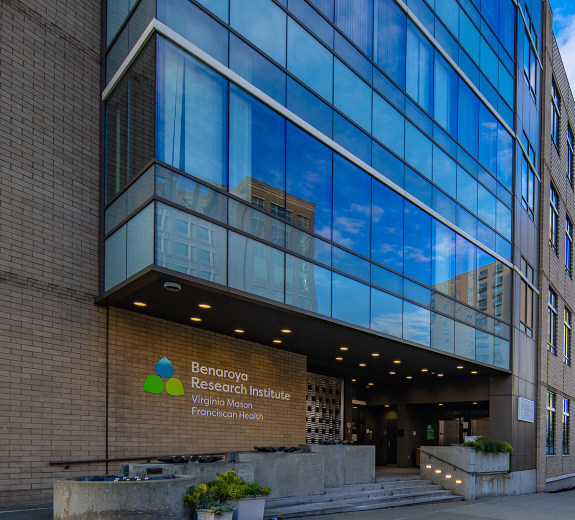Findings implicate a novel role for IgA in systemic lupus erythematosus that has implications to improve the diagnosis and treatment of the disease
In an article published today in the journal Science Translational Medicine, Benaroya Research Institute (BRI) scientists led by Hayley Waterman, PhD, and Jessica Hamerman, PhD, demonstrate that IgA autoantibodies play a significant role in systemic lupus erythematosus (SLE) development. They found that IgA autoantibodies bind to and activate plasmacytoid dendritic cells (pDCs), thereby triggering the release of the cytokine interferon a (IFNa), important in lupus development and progression.
SLE is an autoimmune disease in which autoreactive anti-nuclear antibodies recognize antigens from the nucleus of our own cells such as double stranded DNA and DNA- or RNA-associated proteins. Anti-nuclear antibodies form nucleic acid-containing immune complexes, which deposit in tissues and are recognized by immune cells such as pDCs that release cytokines to trigger inflammation and disease progression. While most studies have focused on IgG containing immune complexes in lupus, IgA is the second most prevalent antibody isotype in the blood and increased IgA autoantibody levels have been associated with SLE in previous studies.
Using blood serum samples, Drs. Waterman and Hamerman found that most individuals with SLE have IgA autoantibodies against at least one nuclear antigen, and these individuals often have both IgA and IgG autoantibodies against the same nuclear antigens. This, combined with their new finding that pDCs express the IgA-specific receptor, FcaR, suggests that both IgA and IgG anti-nuclear antibody binding plays a role in the activation of pDCs. This led to the research team’s key finding that immune complexes generated from lupus serum containing IgA and IgG together work synergistically on pDCs, leading to secretion of higher levels of IFNa than if immune complexes didn’t contain IgA.
The research team uncovered another way that IgA autoantibodies may contribute to the higher cytokine production and inflammation in lupus patients. They found that pDCs isolated from blood of individuals with SLE had significantly increased binding of immune complexes, and higher expression of the IgA receptor, FcaR, surface expression compared to pDCs from the blood of people without lupus. This higher capacity to bind IgA paired with the synergistic effect of IgA with IgG in immune complexes likely contributes to the high, pathogenic levels of IFNa in many lupus patients.



